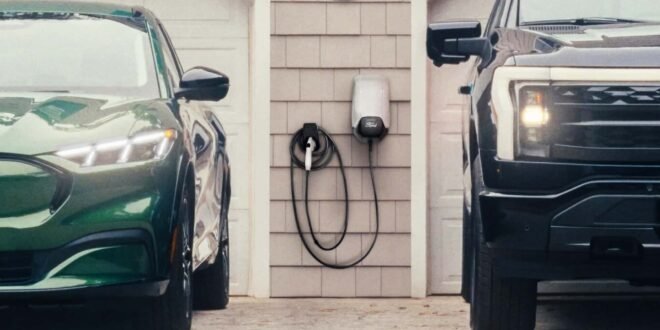Ford Extends EV Incentive Program Amid Tax Credit Expiration
Ford has extended its Power Promise program, which includes a complimentary home Level 2 charger and installation for new electric vehicle (EV) buyers. This extension is set to last until September 30, coinciding with the expiration of the federal EV tax credit that offers up to $7,500 in savings on new EV purchases.
The Ford Power Promise was initially scheduled to end last month, but the automaker has decided to keep it active as long as the tax credits remain in effect. This move comes as Ford, like other automakers, anticipates potential shifts in consumer demand for electric vehicles due to changing incentives.
Since the program’s launch, Ford has installed over 10,000 chargers across 50 states. The initiative aligns with broader efforts by electric-vehicle advocates who believe all automakers should provide similar support to customers purchasing EVs.
Benefits of the Ford Power Promise
The program offers more than just a free charger and installation. It also grants access to a wide network of public EV charging stations, including the Tesla Supercharger network. Additionally, buyers receive a 10-year battery warranty that guarantees at least 90% battery health after 100,000 miles. Studies have shown that modern EV batteries often last well beyond this benchmark, frequently reaching 200,000 miles or more with 80% capacity remaining.
For many EV drivers, the majority of their charging occurs at home. Level 2 chargers, while beneficial, can be expensive—costing several hundred dollars. Installation fees vary widely, ranging from $2,000 to $10,000 depending on a home’s electrical setup. By covering these costs, Ford’s program simplifies the transition to electric vehicles for newcomers who may not be familiar with the complexities of charger selection and installation.
Financial Savings and Consumer Appeal
According to Ford, drivers can save between $26 and $55 per “fill-up” compared to traditional gasoline costs. While DC fast charging stations can be costly—often exceeding $30 in urban areas like New York—most EV owners rely on home charging for daily use. Data suggests that 80% to 85% of EV owners charge at home, making the Power Promise an attractive option for those looking to reduce long-term transportation costs.
The program applies to new 2025 F-150 Lightning, Mustang Mach-E, and E-Transit Cargo Van models purchased or leased from participating Ford dealerships through September 30. Buyers must check Ford’s website for specific terms and conditions.
Industry Implications and Future Outlook
As the EV market continues to evolve, Ford’s decision to extend the Power Promise reflects a strategic effort to maintain customer interest amid shifting incentives. The company emphasizes that making the switch to electric remains accessible and advantageous for consumers, even as the landscape of EV support changes.
With the tax credit set to expire soon, the next few months represent a critical window for potential buyers to take advantage of both the financial benefits and the added convenience of the Power Promise. For now, Ford’s initiative stands as a compelling example of how automakers can support the transition to sustainable transportation.
Additional Resources
- Tested: The 2025 Porsche Taycan Is Still A Fast-Charging Demon
- This ‘Incredible’ 607-Mile EV Range Test Makes A Crucial Point About Slowing Down
- EV Fast Charging Is Growing Up, And Growing Bigger
- EV Charger Funding Finally Gets Some Good News
- EV Fast Chargers Are Growing Much More Quickly Than You Think
- Eight-Minute EV Fast-Charging Comes To Europe This Year
- Ford’s Tesla Charging Adapter: The Fascinating Tech That Powers It
- Best Electric Cars For First-Time EV Buyers
 Info Malang Raya Its All About World News
Info Malang Raya Its All About World News



